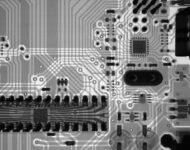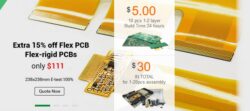The Advantages of Flex PCBs And Their Applications

PCBs are an inherent component of electronic devices. They provide mechanical support and electrical connectivity for the electronic appliances. Initially, customers preferred simple, and rigid PCBs as they were easy to make, less expensive, and used for specific purposes. However, with the ever-increasing consumers’ demand and need for smaller, and sophisticated appliances, the developers faced a new challenge of integrating complex circuits into a final application. It demanded small, yet efficient, durable, yet lighter in weight PCBs that can fit into modern electronic appliances having smaller size and dimensions. Moreover, the need for PCBs that can withstand high temperature, pressure, and tough commercial and industrial conditions provided the electronics developers a stimulus to manufacture different kinds of PCBs to fulfill rising needs and expectations of the people. This led to the introduction of flexible PCBs into the world of electronics. Since then, their demand has only increased and worldwide share of flexible PCBs is expected, backed by anecdotal evidence and data, to reach a staggering $27 billion by 2022. At present, its demand is burgeoning at an annual rate of…






